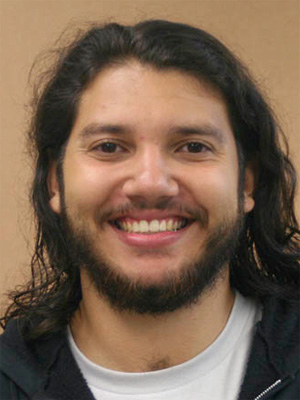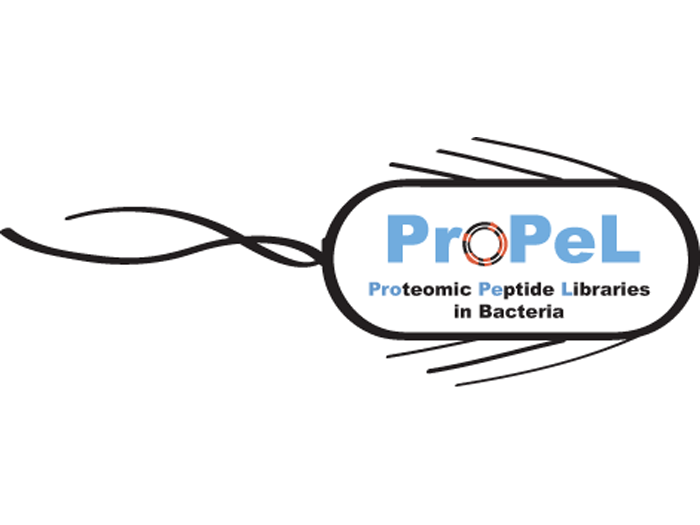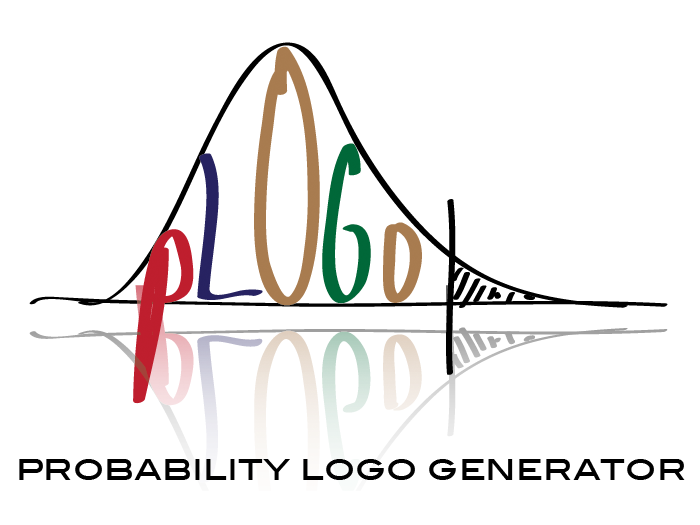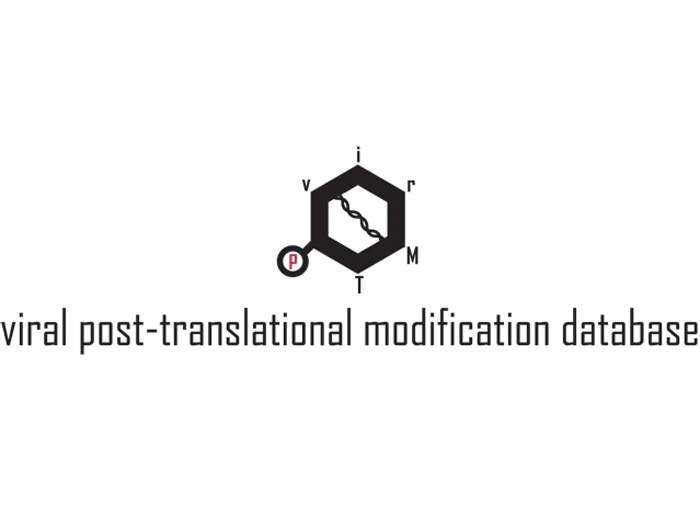|
Lubner JM, Dodge-Kafka KL, Carlson CR, Church GM, Chou MF, & Schwartz D. (2017). Cushing's Syndrome mutant PKAL205R exhibits altered substrate specificity. FEBS Letters. doi: 10.1002/1873-3468.12562.
|
Jan 2017 |
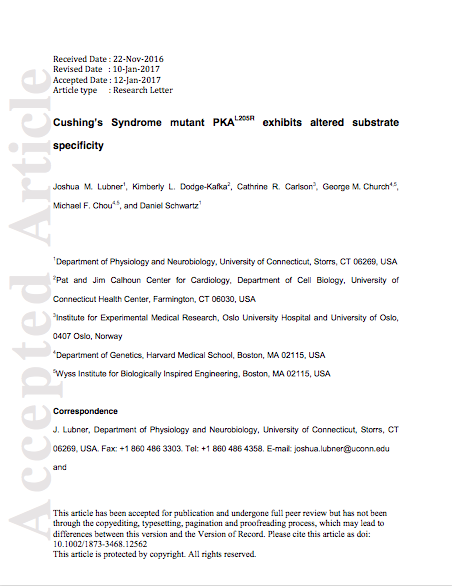
|
[link]
|
|
|
Mitra SK, Chen R, Dhandaydham M, Wang X, Blackburn RK, Kota U, Goshe MB, Schwartz D, Huber SC, & Clouse SD. (2015). An autophosphorylation site database for leucine-rich repeat receptor-like kinases in Arabidopsis thaliana. Plant Journal 82, 1042-60.
|
May 2015 |
|
[link]
|
|
|
O'Shea JP, Chou MF, Quader SA, Ryan JK, Church GM, & Schwartz D. (2013). pLogo: A probabilistic approach to visualizing sequence motifs. Nat Methods 10, 1211-2.
|
Oct 2013 |
|
[link]
|
[link]
|
|
Tarkar A, Loges NT, Slagle CE, Francis R, Dougherty GW, Tamayo JV, Shook B, Cantino M, Schwartz D, Jahnke C, Olbrich H, Werner C, Raidt J, Pennekamp P, Abouhamed M, Hjeij R, Köhler G, Griese M, Li Y, Lemke K, Klena N, Liu X, Gabriel G, Tobita K, Jaspers M, Morgan LC, Shaprio AJ, Letteboer SJ, Mans DA, Carson JL, Leigh MW, Wolf WE, Chen S, Lucas JS, Onoufriadis A, Plagnol V, Schmidts M, Boldt K, UK10K, Roepman R, Zariwala MA, Lo CW, Mitchison HM, Knowles MR, Burdine RD, LoTurco JJ, & Omran H (2013). DYX1C1 is required for axonemal dynein assembly and ciliary motility. Nat Genetics 45, 995-1003.
|
Jul 2013 |
|
[link]
|
[link]
|
|
Chou MF*, Prisic S*, Lubner JM, Church GM, Husson RN, & Schwartz D (2012). Using bacteria to determine protein kinase specificity and predict target substrates. PLOS ONE 7(12): e52747.
|
Dec 2012 |
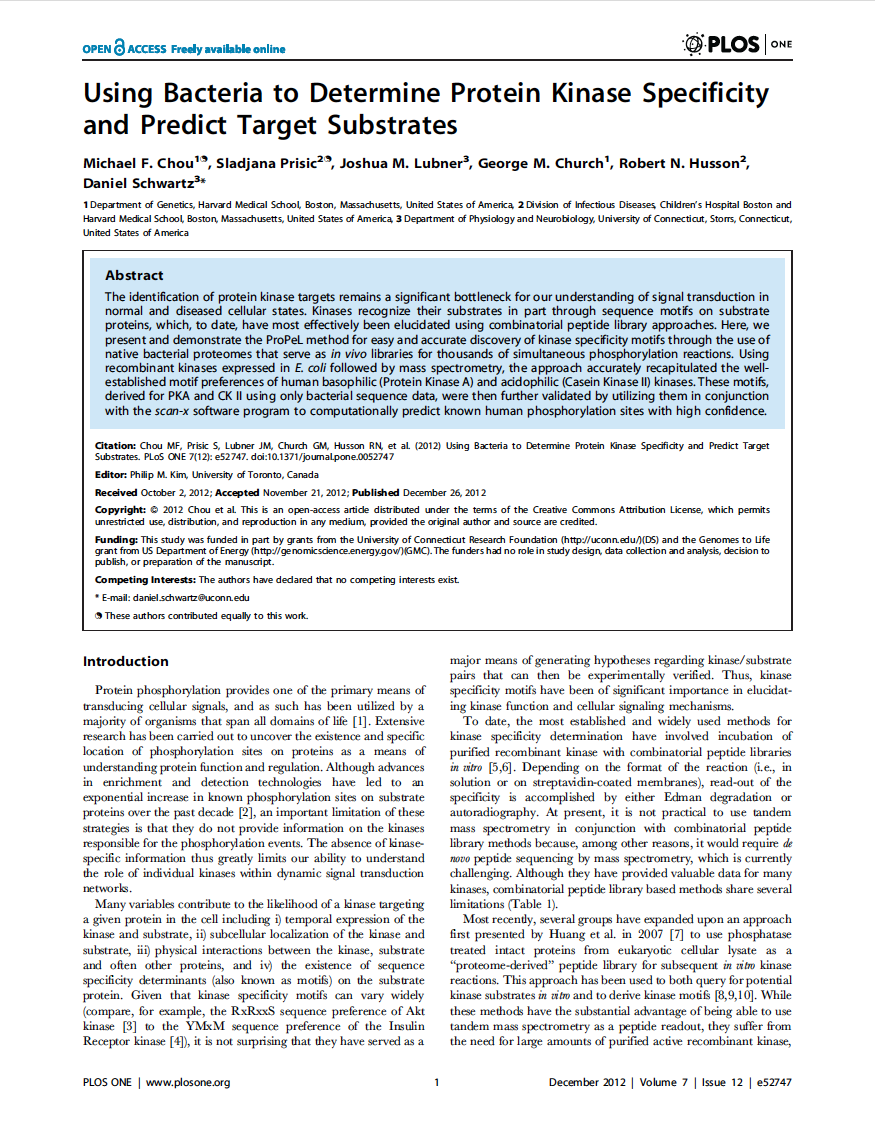
|
[link]
|
[file]
|
|
Wu X, Oh MH, Kim HS, Schwartz D, Imai BS, Yau PM, Clouse SD, & Huber SC (2012). Transphosphorylation of E. coli proteins during production of recombinant protein kinases provides a robust system to characterize kinase specificity. Front Plant Sci 3:262.
|
Nov 2012 |
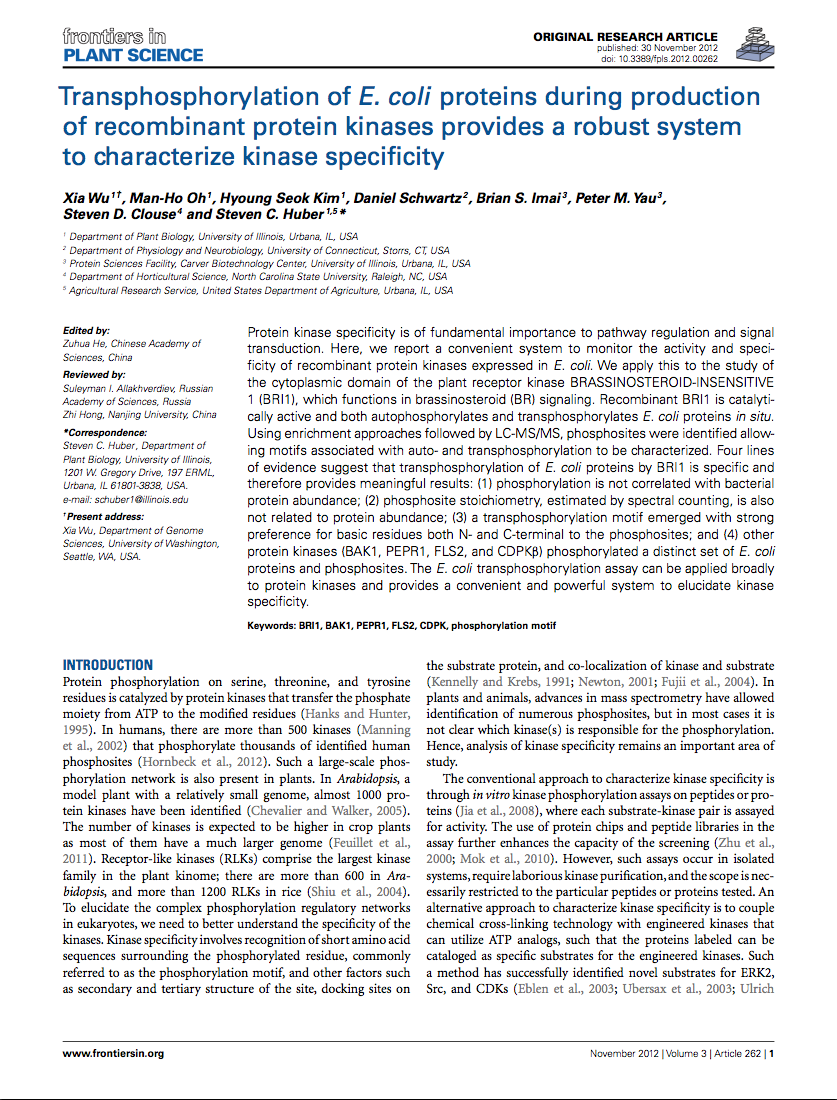
|
[link]
|
[file]
|
|
Schwartz D (2012). Prediction of lysine post-translational modifications using bioinformatic tools. Essays Biochem 52, 165-77.
|
May 2012 |
|
[link]
|
|
|
Chou MF and Schwartz D (2011). Using the scan-x Web Site to Predict Protein Post-Translational Modifications. Curr Protoc Bioinformatics 36, 13.16.1-13.16.8.
|
Dec 2011 |
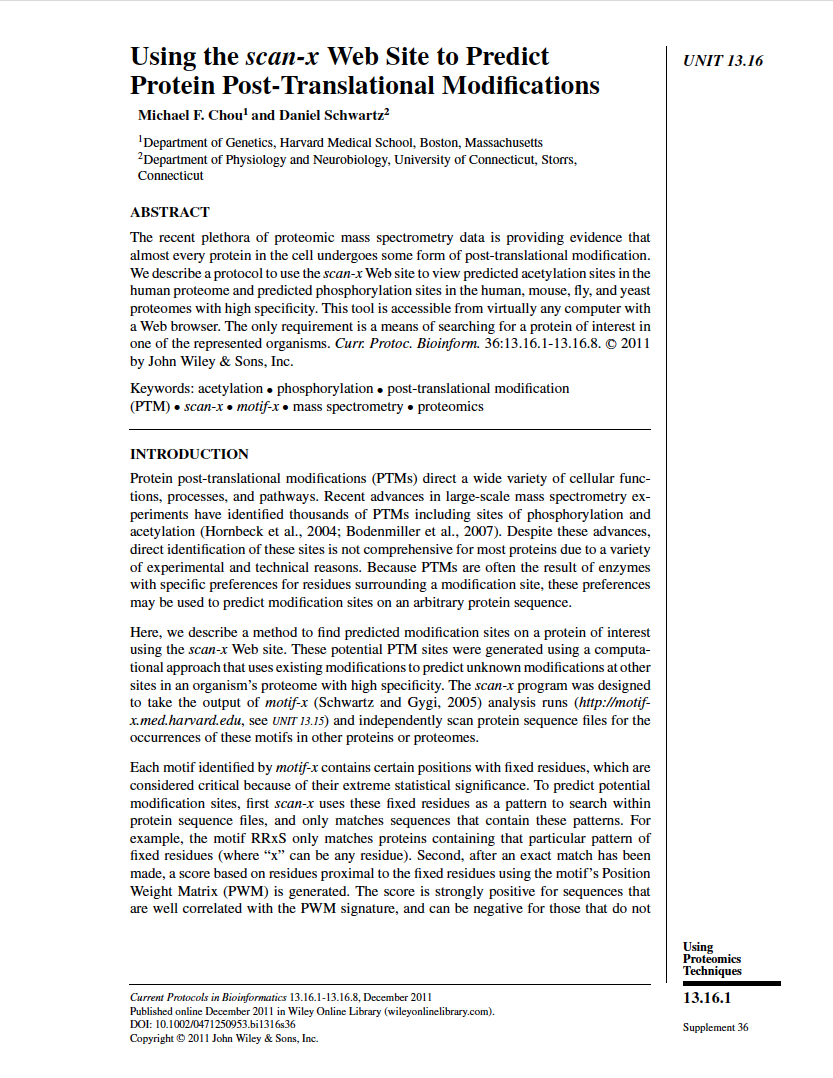
|
[link]
|
|
|
Chou MF and Schwartz D (2011). Biological Sequence Motif Discovery Using motif-x. Curr Protoc Bioinformatics 35, 13.15.1-13.15.24.
|
Sep 2011 |
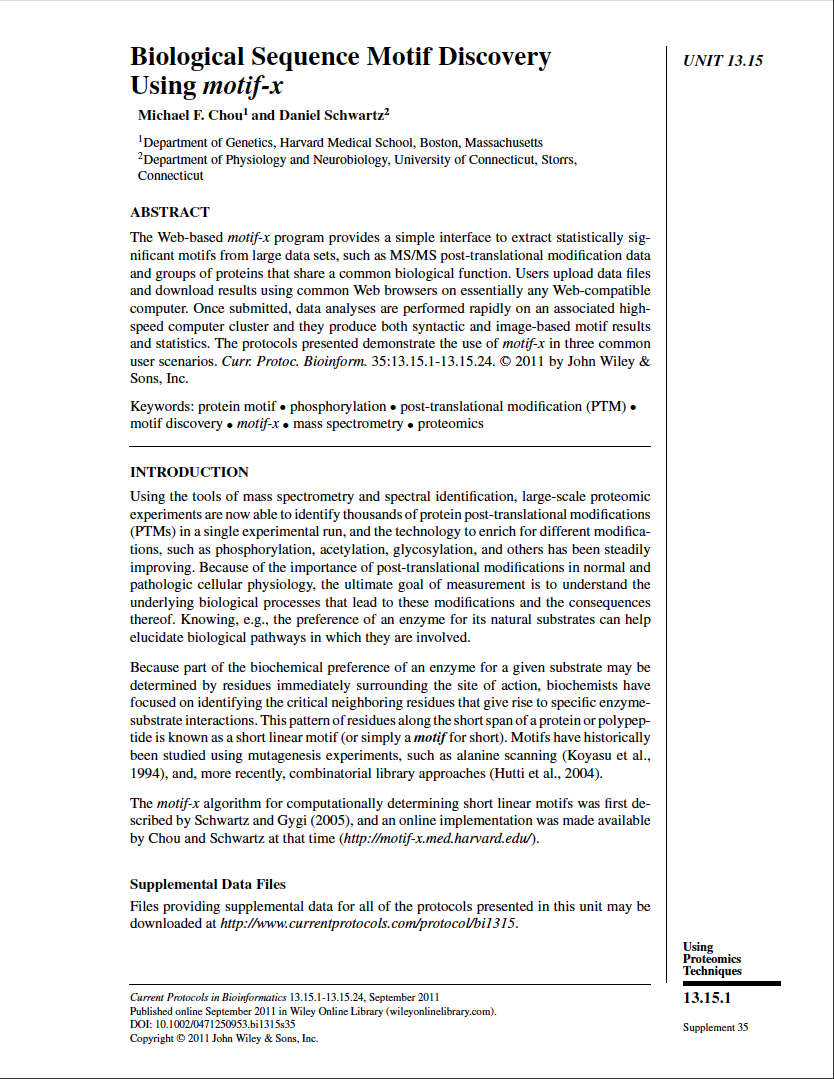
|
[link]
|
[file]
|
|
Schwartz D and Church GM (2010). Collection and motif-based prediction of phosphorylation sites in human viruses. Sci Signal 3, rs2.
|
Aug 2010 |
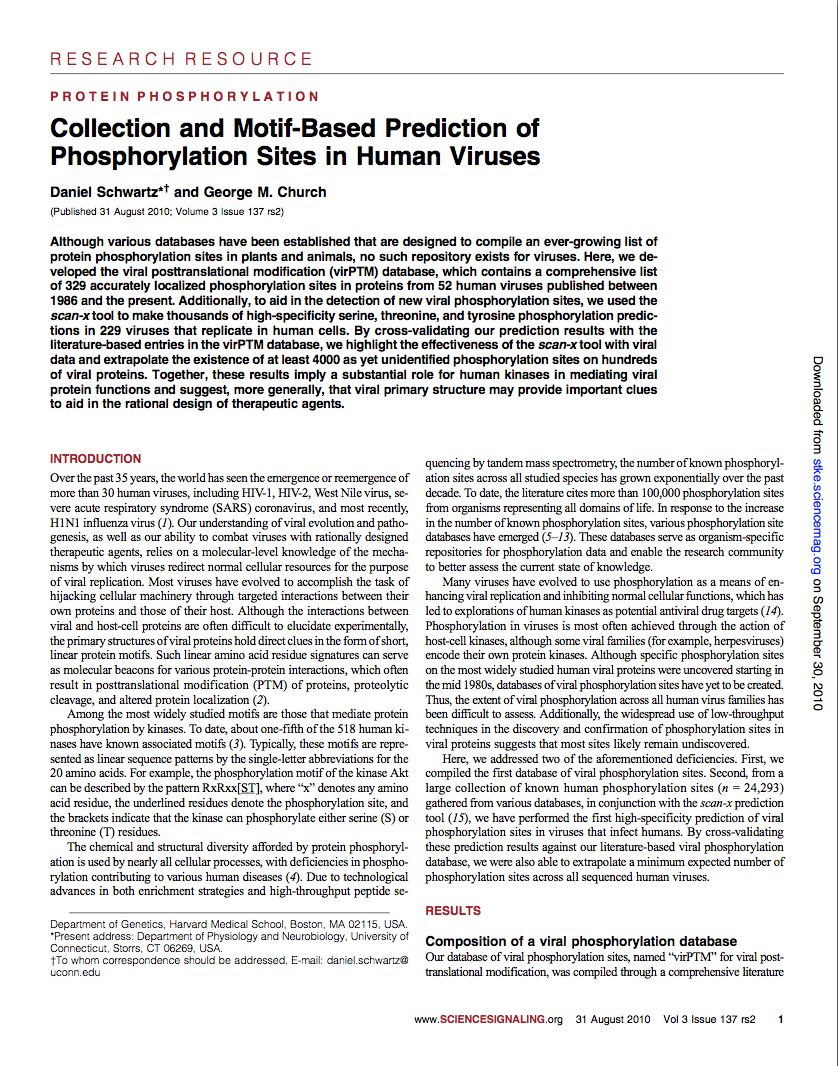
|
[link]
|
[file]
|
|
Prisic S, Dankwa S, Schwartz D, Chou MF, Locasale JW, Kang CM, Bemis G, Church GM, Steen H, & Husson RN (2010). Extensive phosphorylation with overlapping specificity by Mycobacterium tuberculosis serine/threonine protein kinases. Proc Natl Acad Sci U S A 107, 7521-6.
|
Apr 2010 |
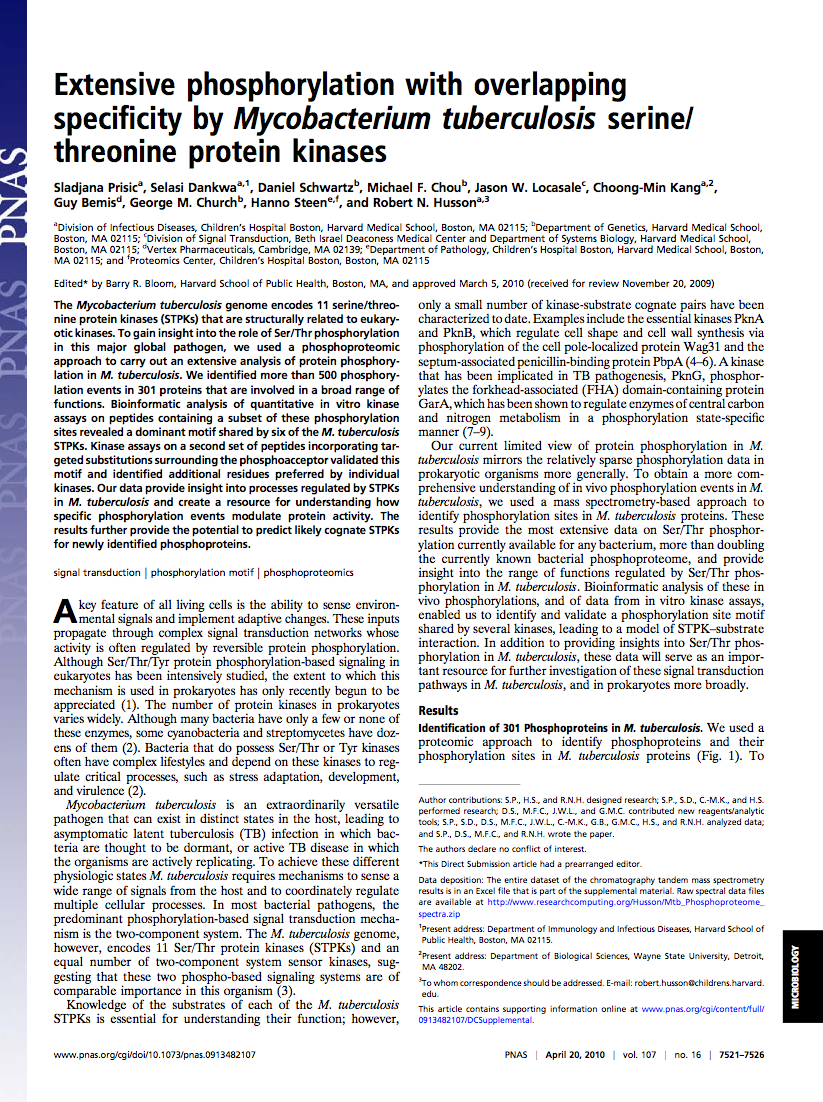
|
[link]
|
[file]
|
|
Grimsrud PA, den Os D, Wenger CD, Swaney DL, Schwartz D, Sussman MR, Ane JM, & Coon JJ (2010). Large-scale phosphoprotein analysis in Medicago truncatula roots provides insight into in vivo kinase activity in legumes. Plant Physiol 152, 19-28.
|
Nov 2009 |
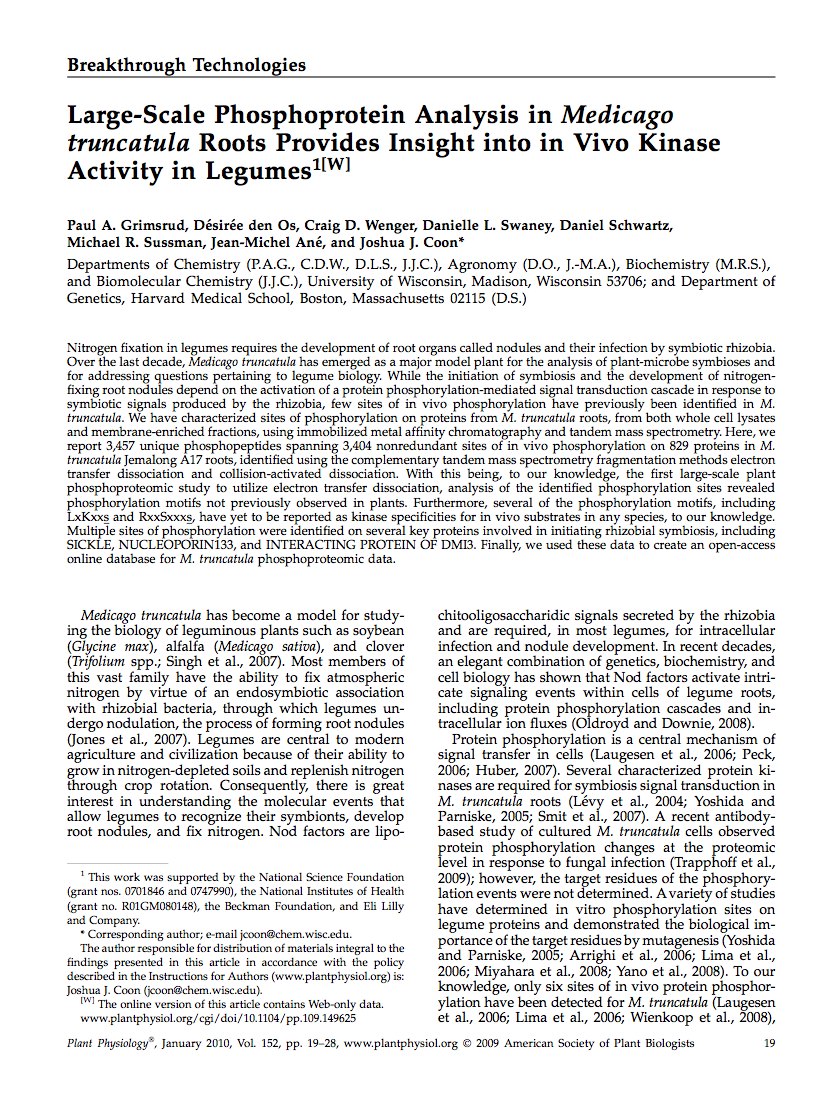
|
[link]
|
[file]
|
|
Schwartz D*, Chou MF*, & Church GM (2009). Predicting protein post-translational modifications using meta-analysis of proteome scale data sets. Mol Cell Proteomics 8, 365-79.
|
Oct 2008 |
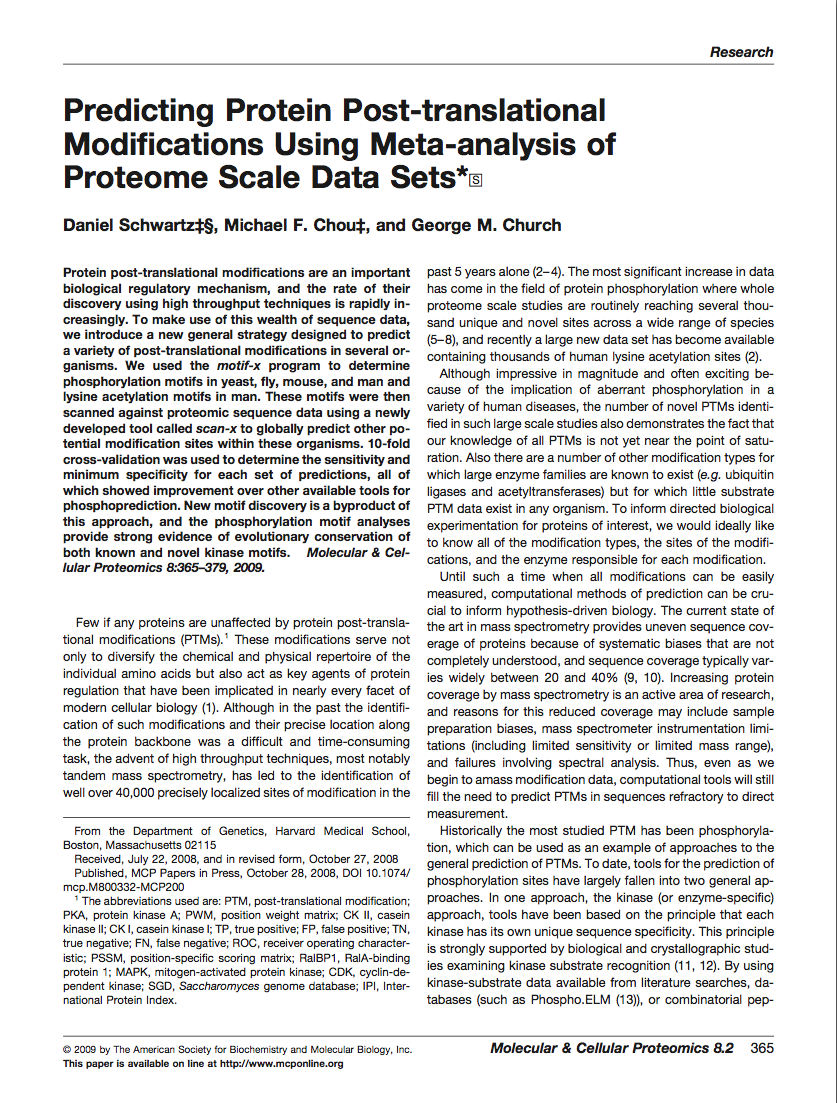
|
[link]
|
[file]
|
|
Chiang CW*, Derti A*, Schwartz D, Chou MF, Hirschhorn JN, & Wu CT (2008). Ultraconserved elements: analyses of dosage sensitivity, motifs and boundaries. Genetics 180, 2277-93.
|
Oct 2008 |
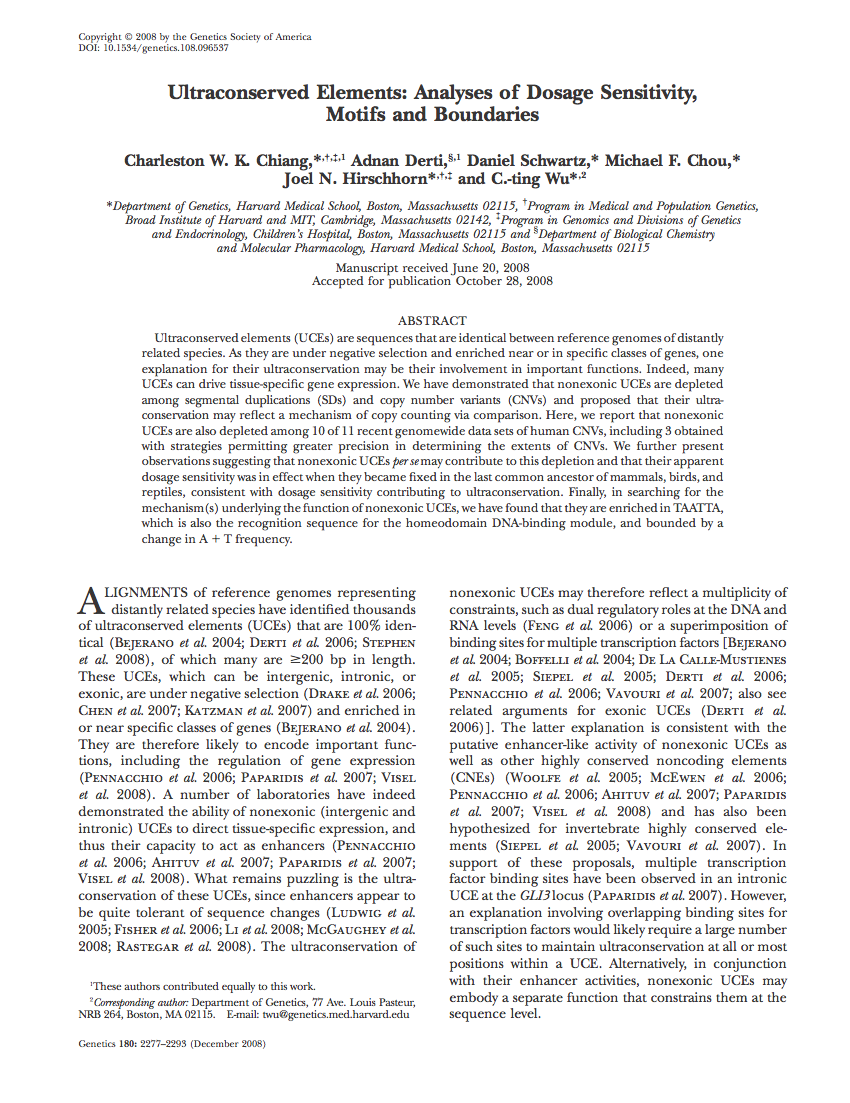
|
[link]
|
[file]
|
|
Ballif BA, Cao Z, Schwartz D, Carraway KL, & Gygi SP (2006). Identification of 14-3-3ε substrates from embryonic murine brain. J Proteome Res 5, 2372-9.
|
Aug 2006 |
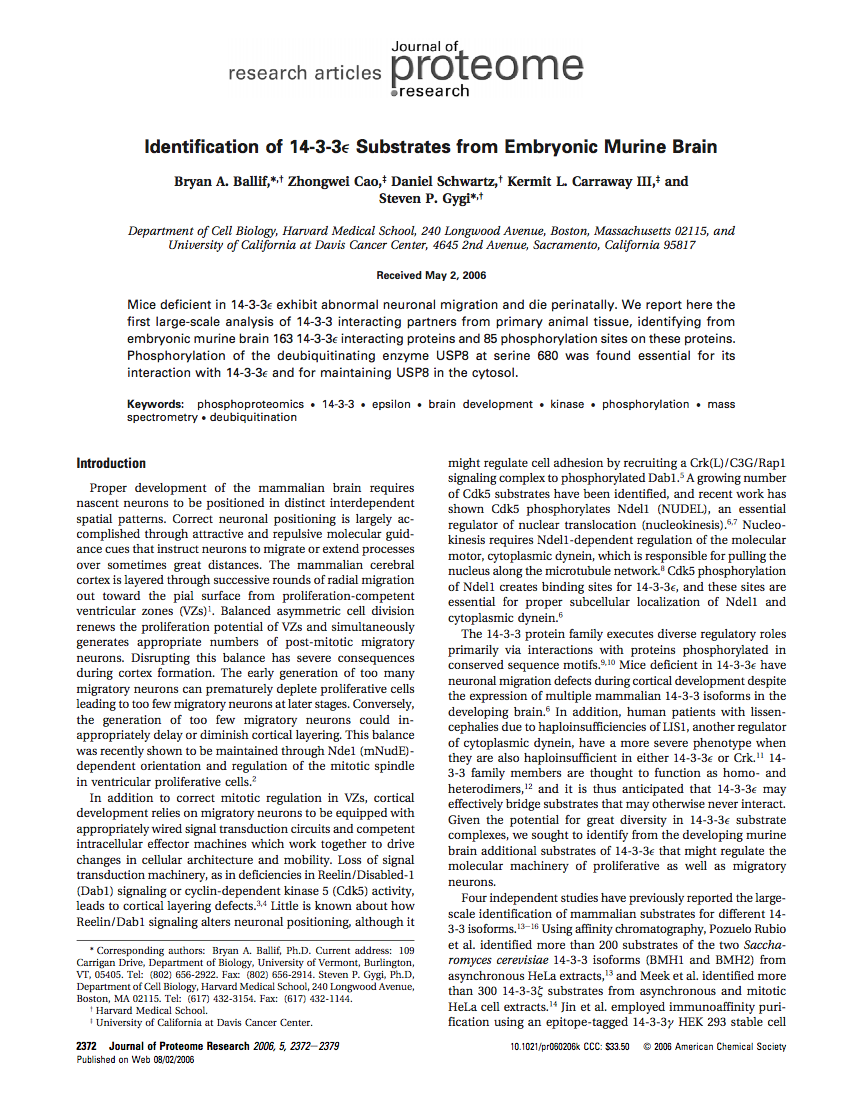
|
[link]
|
[file]
|
|
Schwartz D and Gygi SP (2005). An iterative statistical approach to the identification of protein phosphorylation motifs from large-scale data sets. Nat Biotechnology 23, 1391-8.
|
Nov 2005 |
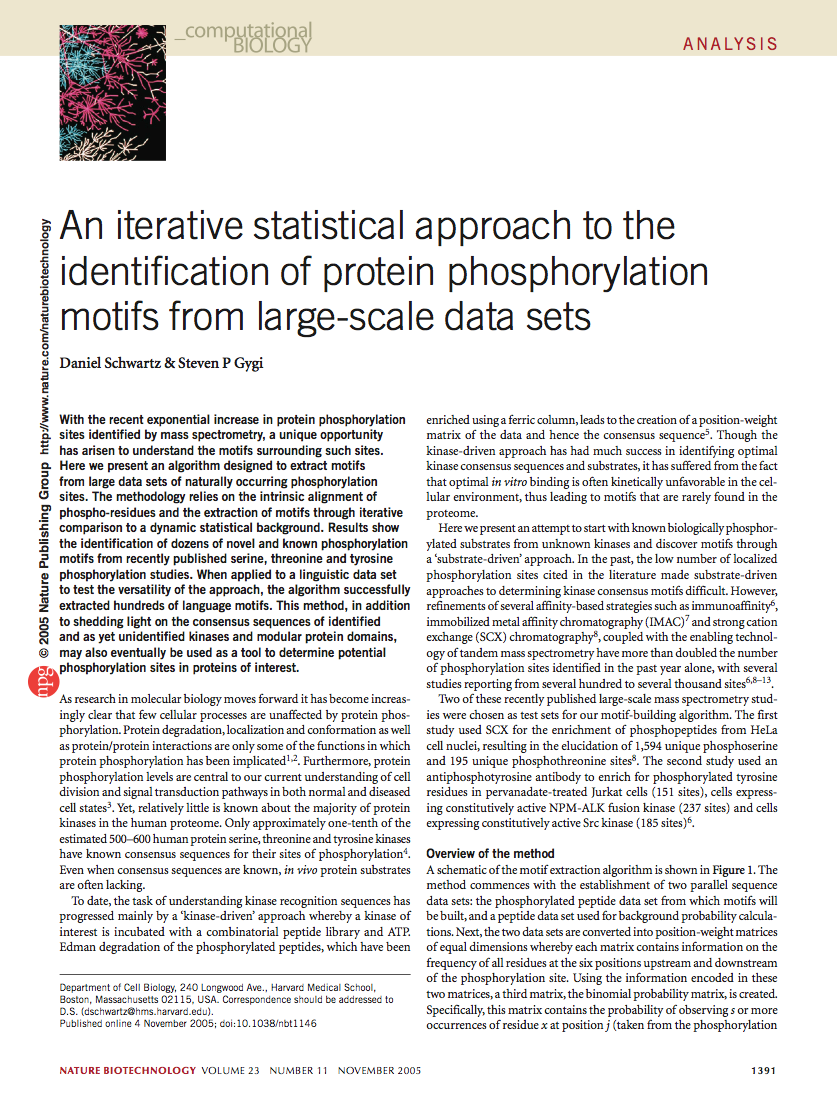
|
[link]
|
[file]
|
|
Ballif BA, Villen J, Beausoleil SA, Schwartz D, & Gygi SP (2004). Phosphoproteomic analysis of the developing mouse brain. Mol Cell Proteomics 3, 1093-101.
|
Sep 2004 |
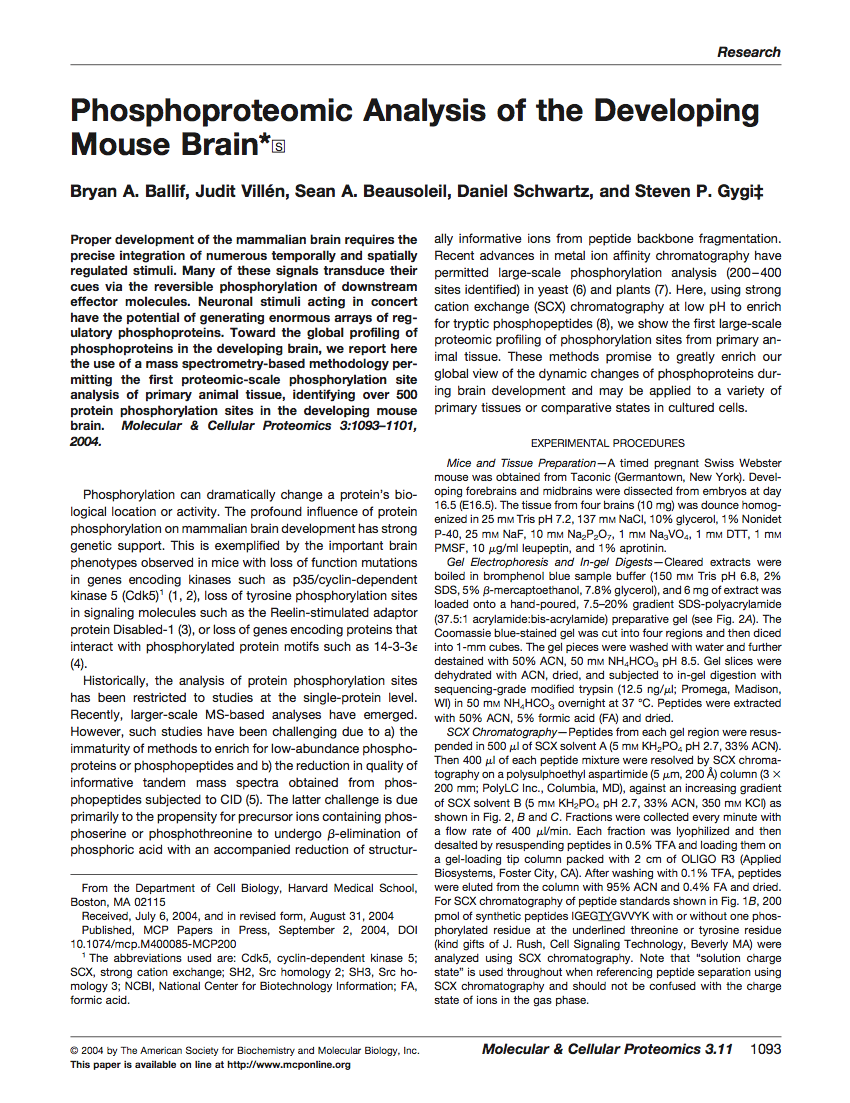
|
[link]
|
[file]
|
|
Beausoleil SA*, Jedrychowski M*, Schwartz D, Elias JE, Villen J, Li J, Cohn MA, Cantley LC, & Gygi SP (2004). Large-scale characterization of HeLa cell nuclear phosphoproteins. Proc Natl Acad Sci U S A 101, 12130-5.
|
Aug 2004 |
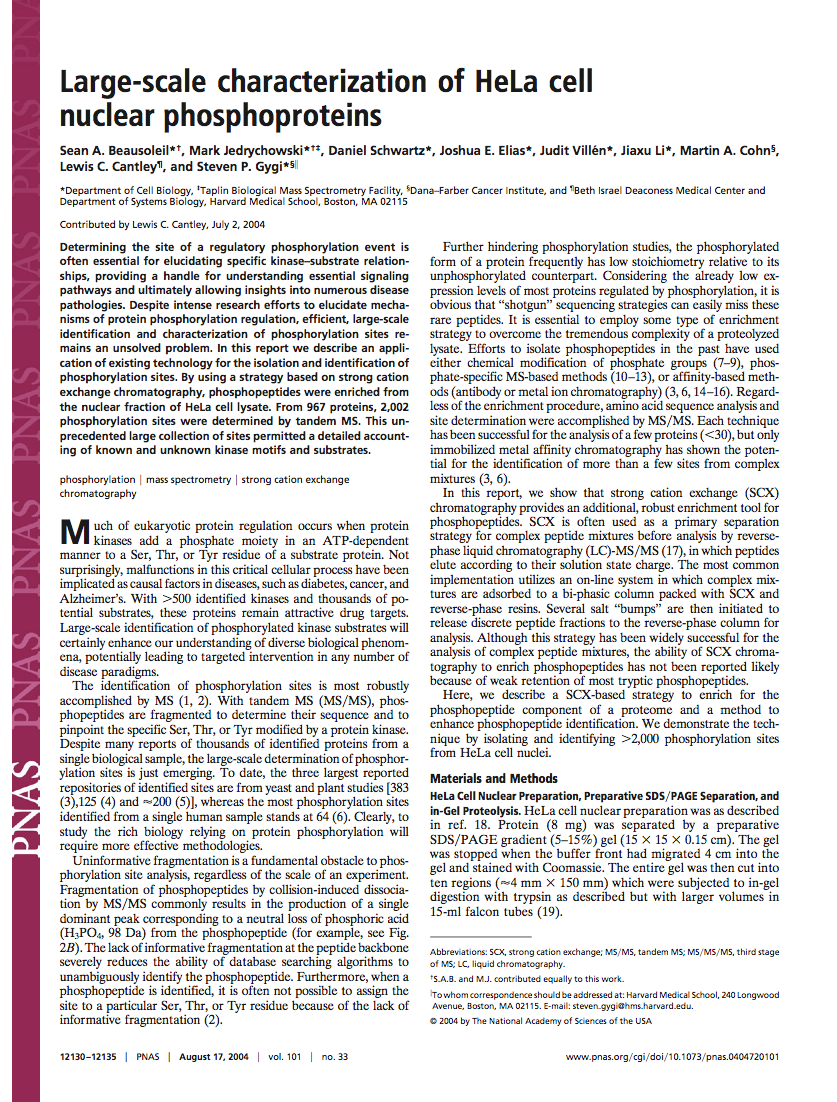
|
[link]
|
[file]
|
|
Shimura H, Schwartz D, Gygi SP, & Kosik KS (2004). CHIP-Hsc70 complex ubiquitinates phosphorylated tau and enhances cell survival. J Biol Chem 279, 4869-76.
|
Nov 2003 |
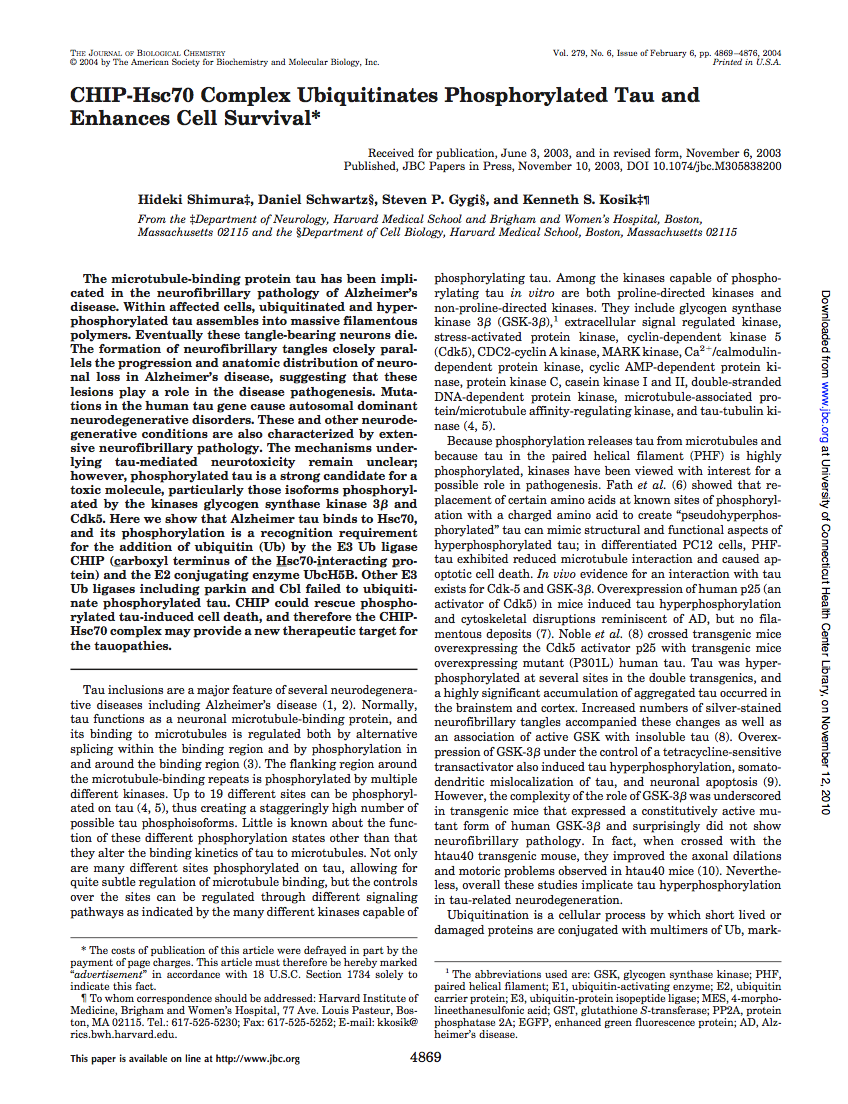
|
[link]
|
|
|
Peng J, Schwartz D, Elias JE, Thoreen CC, Cheng D, Marsischky G, Roelofs J, Finley D, & Gygi SP (2003). A proteomics approach to understanding protein ubiquitination. Nat Biotechnology 21, 921-6.
|
Jul 2003 |

|
[link]
|
[file]
|
|
Schwartz D, Green B, Carmichael LE, & Parrish CR (2002). The canine minute virus (minute virus of canines) is a distinct parvovirus that is most similar to bovine parvovirus. Virology 302, 219-23.
|
Oct 2002 |
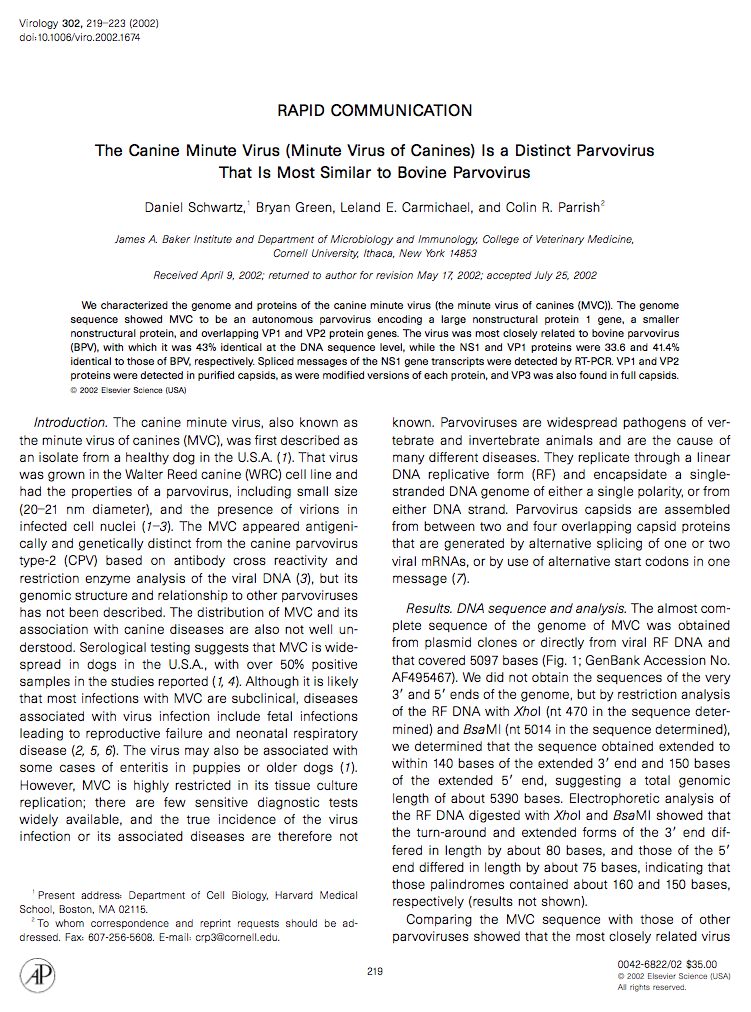
|
[link]
|
|


















